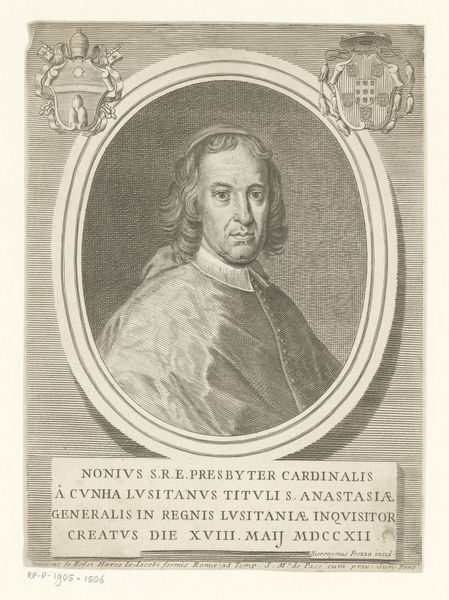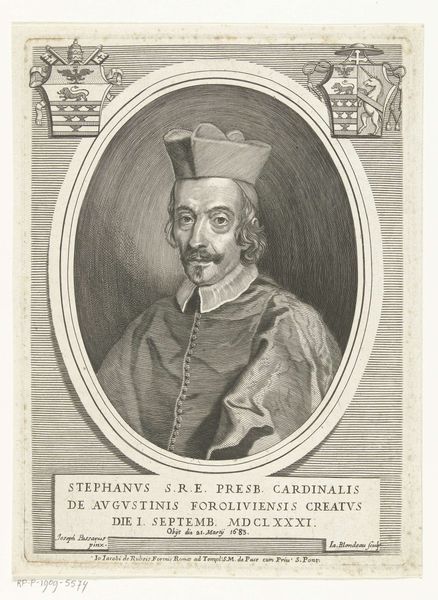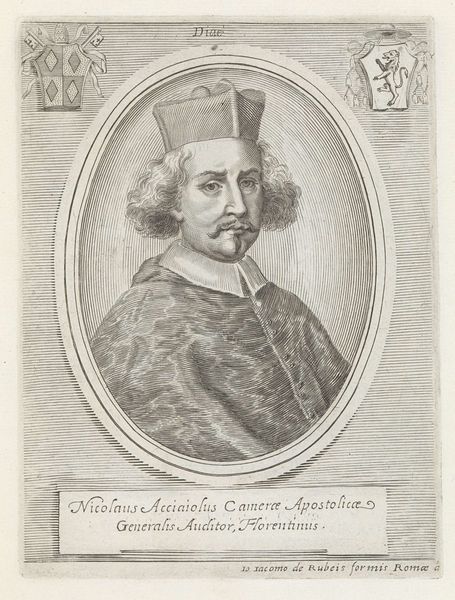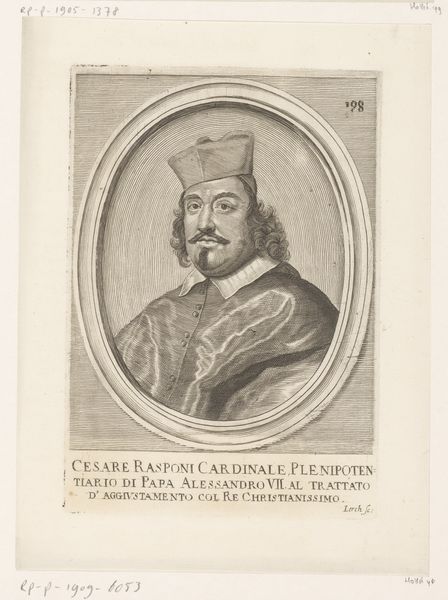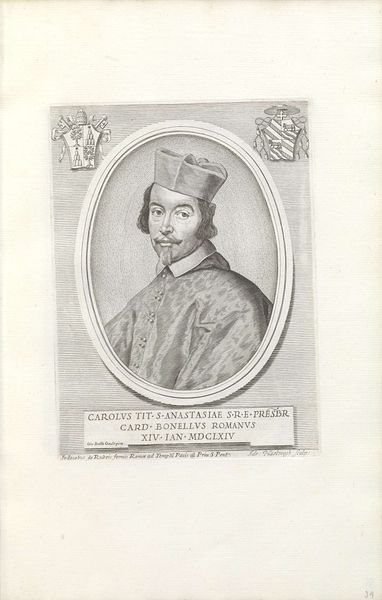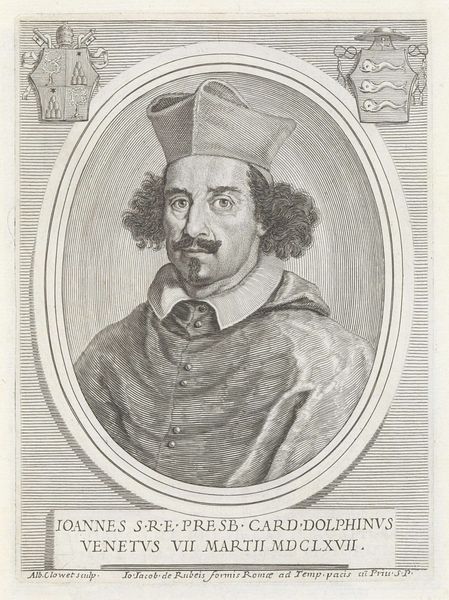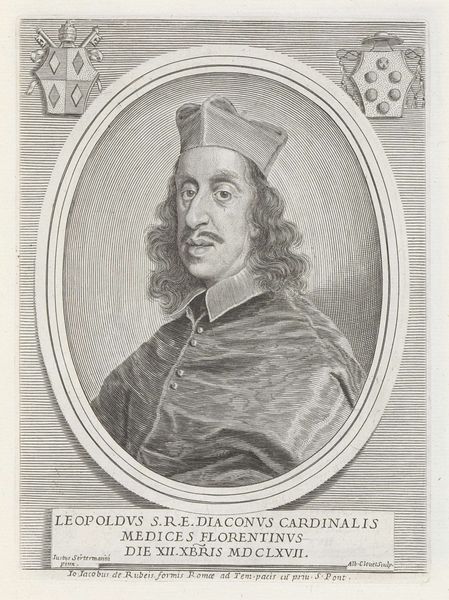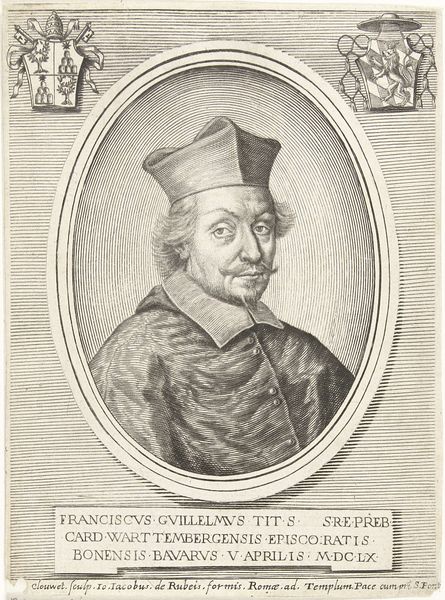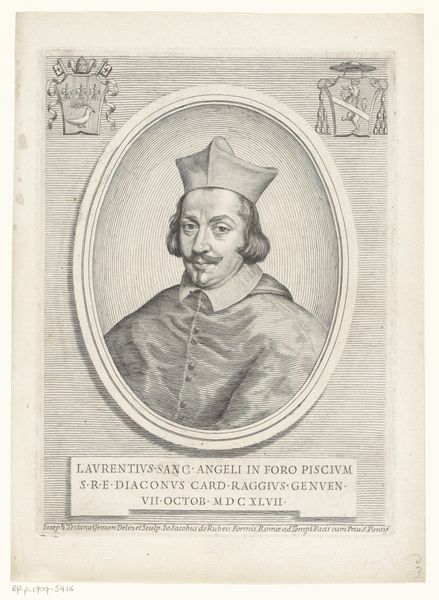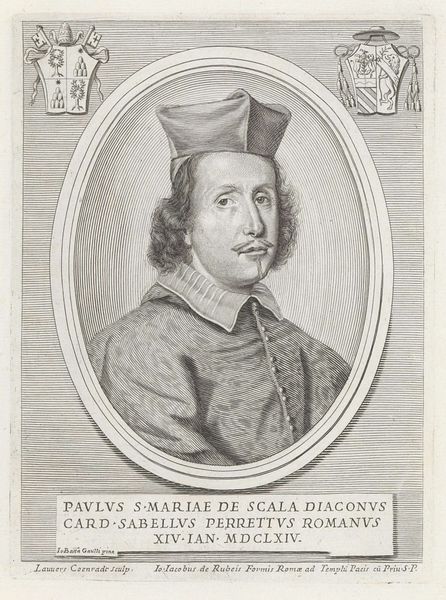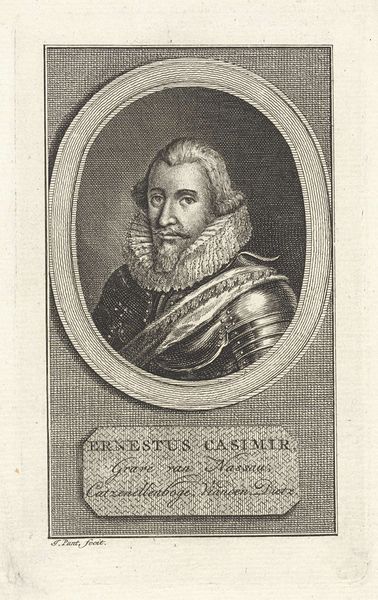
print, engraving
#
portrait
#
baroque
# print
#
old engraving style
#
19th century
#
line
#
academic-art
#
engraving
Dimensions: height 210 mm, width 155 mm
Copyright: Rijks Museum: Open Domain
Editor: Here we have a print of "Portret van kardinaal Carlo Stefano Anastasio Ciceri," created between 1686 and 1698 by Jacques Blondeau. It has a very formal and somewhat austere feeling to it. What strikes you about this piece? Curator: What stands out for me is how this portrait functions as a visual statement of power and status within the context of the Catholic Church during the late Baroque period. It's not just an image of a man; it's a carefully constructed representation meant to project authority. Note the inclusion of his coat of arms in the upper corners—what do you make of that? Editor: I guess it's like saying, "I belong to a specific, important family," and adding weight to his position as Cardinal. So, you’re saying that understanding the social structures of the time helps interpret the art? Curator: Precisely. This image isn't just about personal likeness, it's a performance. It was disseminated as a print, a medium allowing for widespread distribution. What might that imply? Editor: That it was meant to be seen by many, furthering the Cardinal’s influence. Like propaganda, almost? Curator: It could be considered a form of religious and political advertising, definitely. The control and shaping of imagery were crucial in maintaining power and influence at the time. Looking closely at the printmaking technique, how does that contribute to the message? Editor: It looks incredibly precise. The line work is detailed. Almost like it adds a sense of officialdom and seriousness. Curator: Exactly! And understanding these production and dissemination strategies allows us to consider the political function of such imagery and who it serves. Editor: I never really thought about art being used in that way. It's so interesting how social context gives it all new meanings. Curator: Indeed, by examining its history, we understand how powerful individuals use visual tools to construct their legacies and influence public opinion. Hopefully, this helps better contextualize similar images and artworks we find moving forward.
Comments
No comments
Be the first to comment and join the conversation on the ultimate creative platform.

